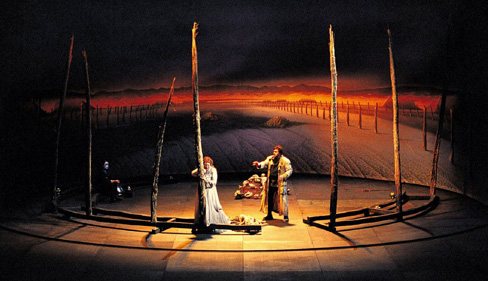Music drama is a type of opera in which the musical and dramatic elements are integrated into an artistic whole. The term first came into general use to describe the later works of the German composer Richard Wagner, such as Tristan und Isolde (1865), The Ring of the Nibelung (1876), and Parsifal (1882). In these operas, the action of the story is depicted continuously in the music and is not held up at critical points to allow the performance of an aria or set-piece chorus.

In the 1700’s, the composer Christoph Willibald Gluck had proposed a form of operatic presentation in which the elements of music, drama, and even scenery were on the same level of importance. Wagner claimed to have achieved this ideal, for which he said German opera had always been aiming since its beginnings. Wagner’s music dramas, with their use of the leitmotif (recurrent symbolic musical theme), set a fashion in operatic composition that was taken up by the German composer Richard Strauss and other composers of the 1900’s. The Italian composer Giacomo Puccini, an admirer of Wagner, borrowed the idea of the leitmotif with brilliant effect, but he continued the tradition of the set-piece aria and chorus, skillfully integrating them into an otherwise seamless web of music.
